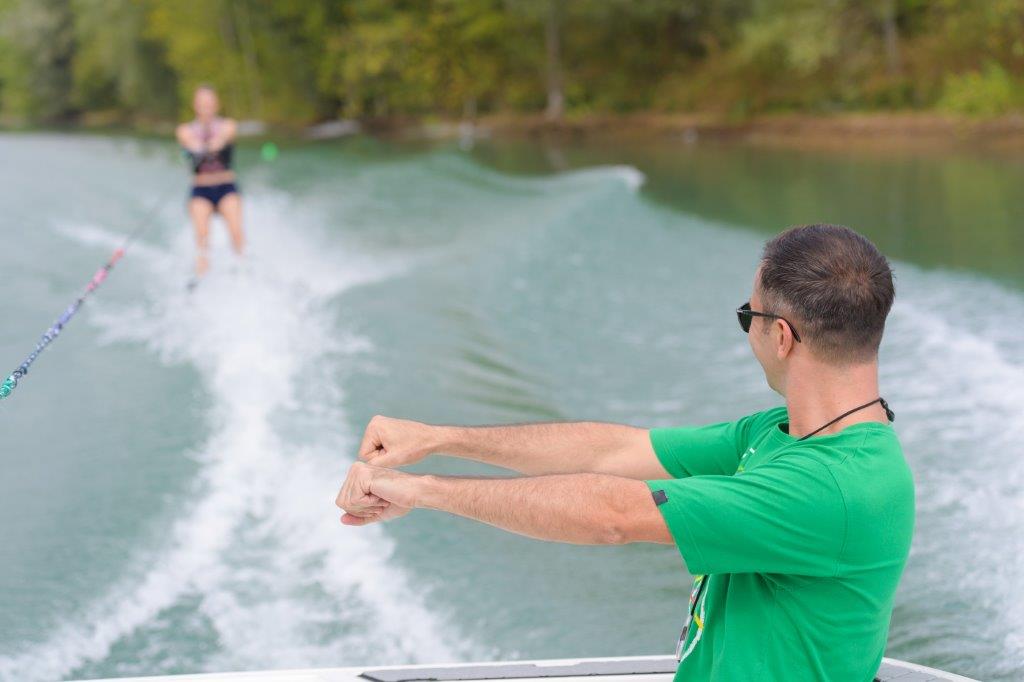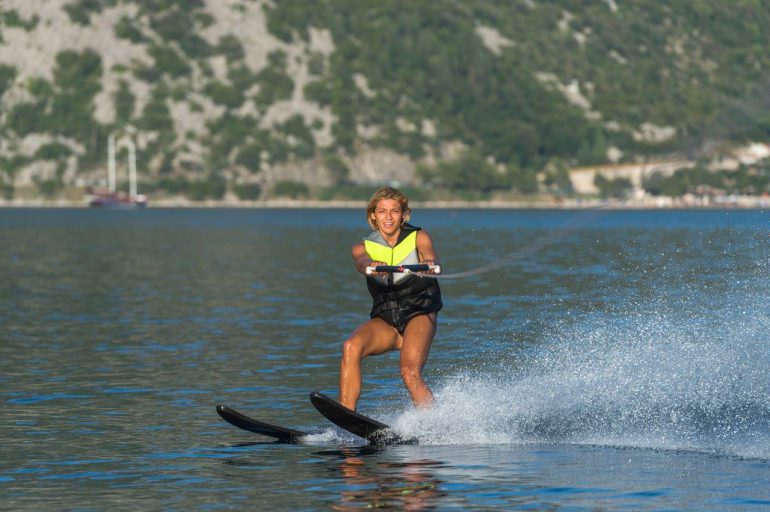Water skiing just may be the granddaddy of all aquatic tow sports.
All you have to do is look around at just about any lake or reservoir during warm months for direct evidence of its vast popularity. So, you might ask, what is an aquatic tow sport? Well you see, that’s just fancy language for a really fun water sport that involves getting towed behind a motorized boat. I mean, if this isn’t a formula for fun, what is? Yes, there is a learning curve, and yes, it’s slightly steeper than some other, similar water sports such as kneeboarding and wakeboarding, but learning how to water ski has its own unique rewards.
First and foremost, there are few feelings in the world of water sports comparable to that of getting up on your water skis successfully for the first time. The thought of popping up on the surfboard for the first time comes to mind, but even that is different. The combination of the solo effort along with the fact that you’re working in tandem with someone else (the driver of the boat), makes water skiing all that much more unique. Once you’re past the learning curve, you’ll enjoy all of the fun and excitement of water skiing, as well as a tremendous sense of gratification that comes with mastering the sport. Before you know it, you’ll be pulling freestyle tricks, jumping wakes, and if the bug really gets you, “casually” skimming through listings of motorboats for sale.
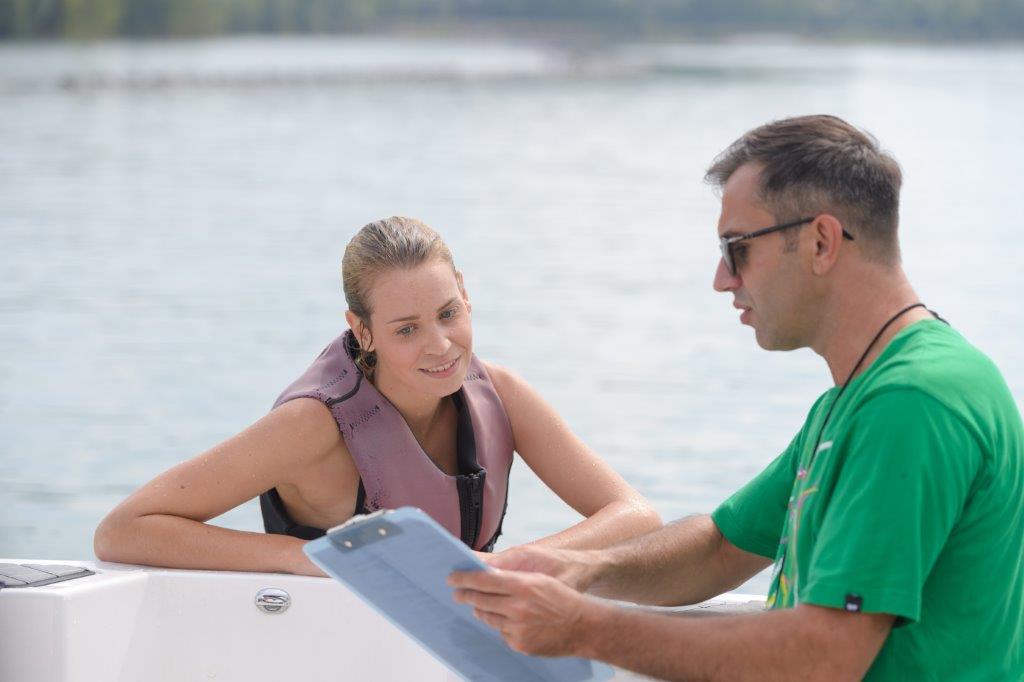
For the purpose of this article, we’ll break down water skiing into three main areas that will address most common questions, misconceptions and basic best practices. We’ll start with tips and info for getting started, then explore how to actually get up onto your water skis. We’ll wrap it all up with the ever-important analysis of how to stay on your skis once you’re up.
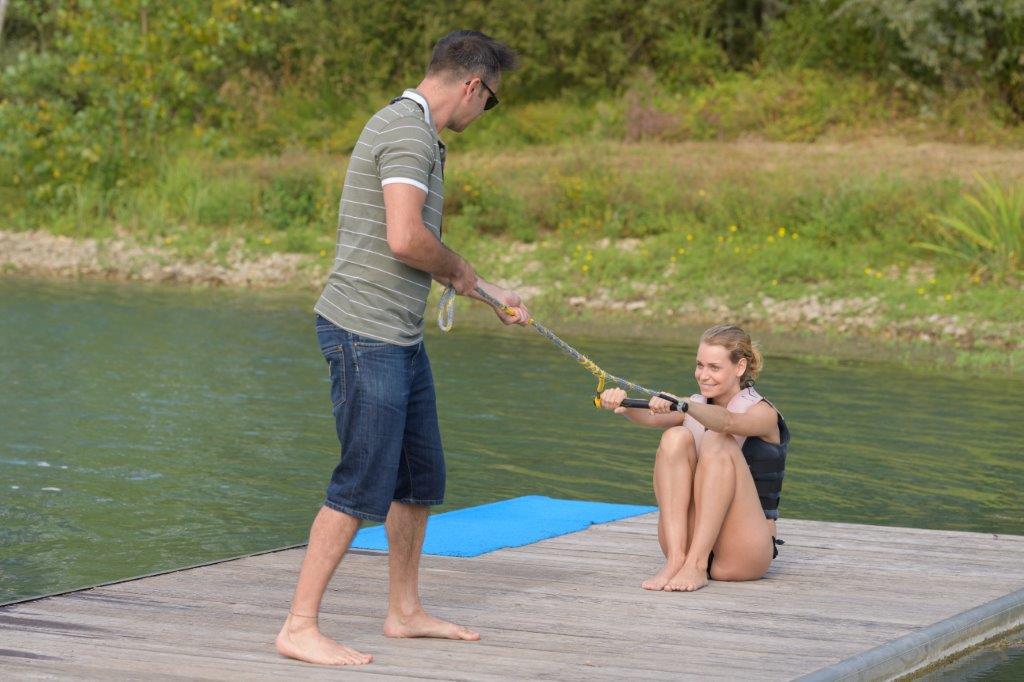
We’re assuming that you are either beginning by taking a lesson or by going out with another person or people who have experience water skiing and can therefore cover any and all safety considerations before even getting in the water. There are many water skiing and wakeboarding schools where you will find trained professionals who can assist with everything from making sure you have the appropriately-sized skis and rope to ensuring any little ones in your group have the modifications in place that they need to make for a more seamless and easy learning experience. In either scenario, it’s helpful to have a basic understanding of some fundamentals.
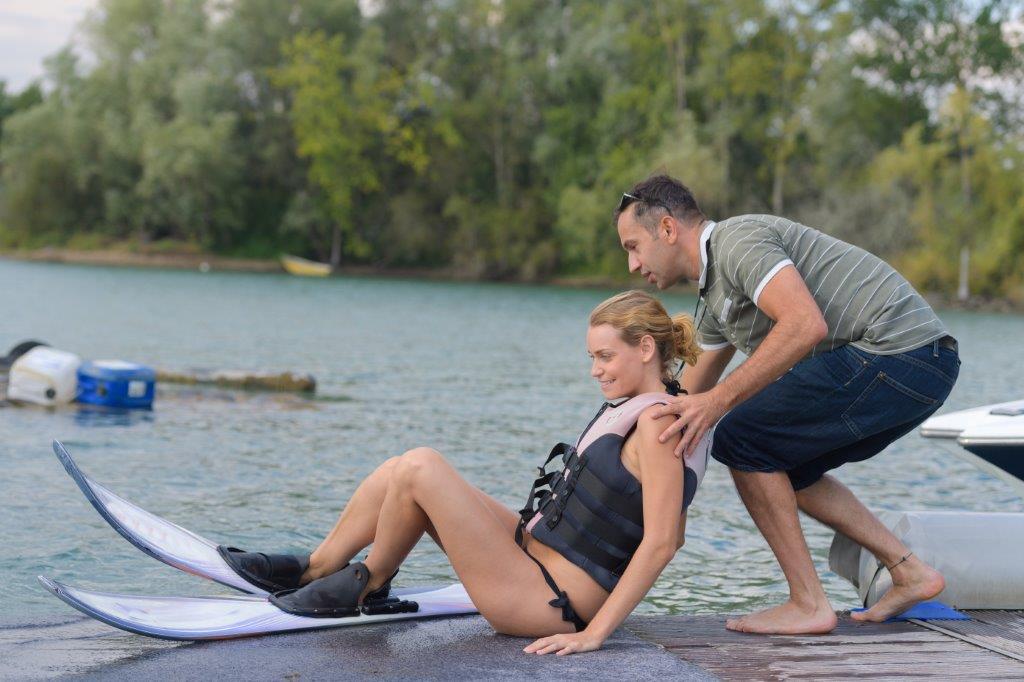
We highly recommend you practice your stance while standing on dry land. You want to hold onto the handle and bend your knees to replicate the stance you’ll take when you get up on your water skis. Have someone else hold onto the other end of the rope. You’ll begin in a seated position and pull yourself up gently to become accustomed to this feeling/motion. Keep your knees close together (not more than hip-width apart) as you pull yourself up. Keep your arms straight so that the rope does the pulling, but don’t hold on so tightly that you become too rigid.
Make sure you cover all relevant hand signals with the driver of the boat. Within the sport of water skiing, there are a number of different signals, and you should become familiar with all of them before getting out on the water. While some are geared specifically toward relaying instructions to the driver for tricks, most bear directly on safety practices and things such as how to indicate to the driver whether they should turn, if you are happy with the rate of speed, or if you need the driver to turn off the boat for some reason. Be sure to wear a life jacket that does not fit too tightly.
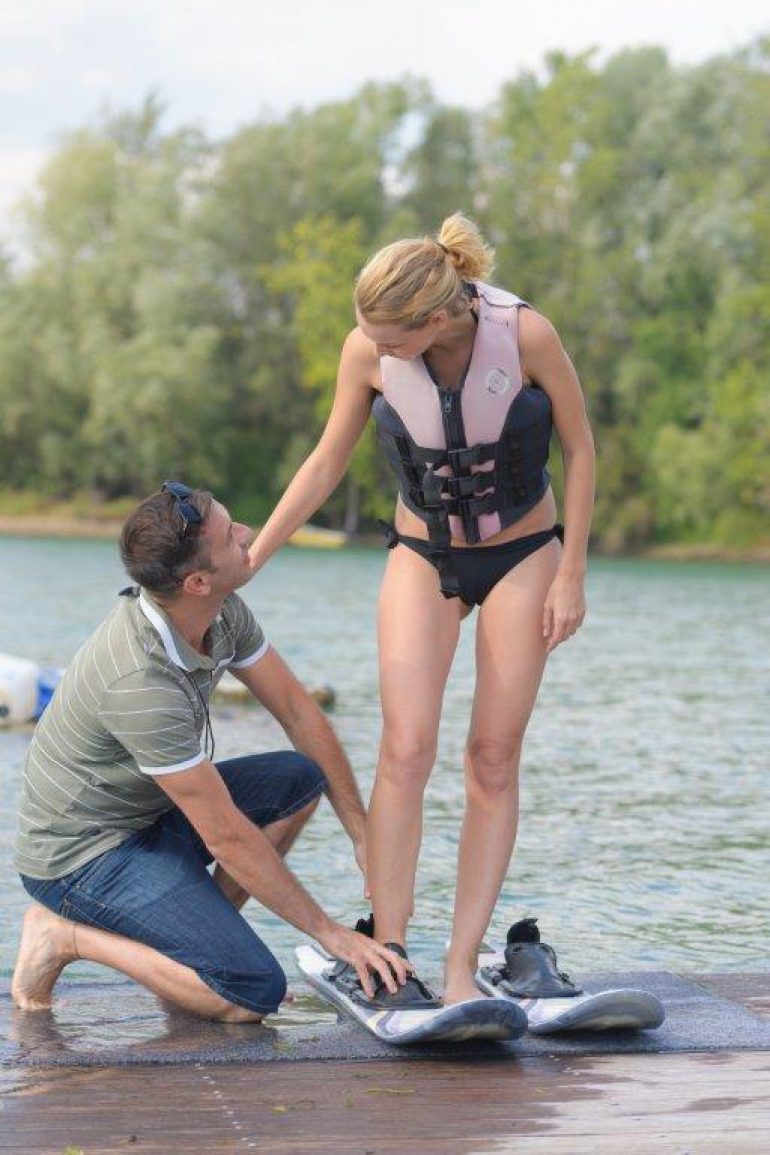
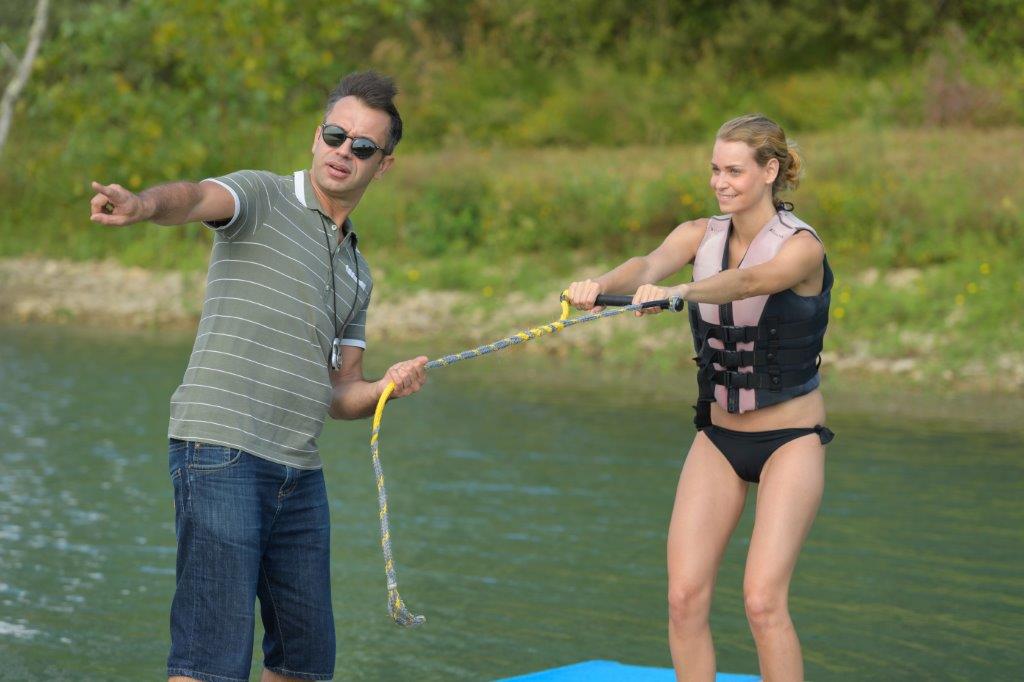
Whether in the context of a lesson or with some trusted friends or family, once you feel comfortable with the basic safety protocol, you’ll be ready to move onto the intense part- getting up on your skis. This isn’t something that is so easily broken down on the written page. As with just about anything, the best way to learn is with practice and repetition, and there is no substitute for a positive, resilient attitude, especially when it comes to learning a skill like water skiing, which by nature, is going to see you taking your share of falls. The choice is yours as to whether you treat these falls as brief obstacles on the way to your success, or rather as failures that keep you from progressing forward. Change the way you look at things, the things you look at change.
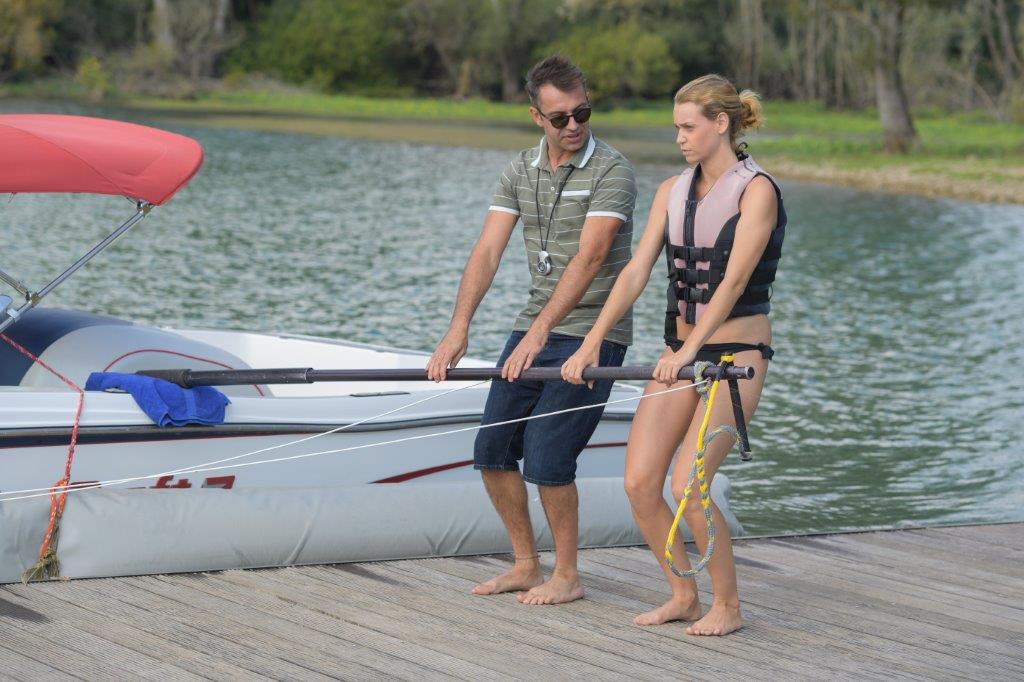
Getting up on your skis involves mastering a set of skills that you will repeat each time you take the water. You start on either the dock or the boat to put on the skis, and then you’ll move to a seated position in the water, your life preserver keeping you afloat. Your skis are pointed straight but are submerged to begin. Hold onto the rope securely with both hands, palms down. Then you want to pull your knees up toward your chest by hugging your arms around your knees. The rope and handle should be between your skis and in between your ski tips and your body. At this point both skis will have surfaced. Keep them straight and pointing upward.
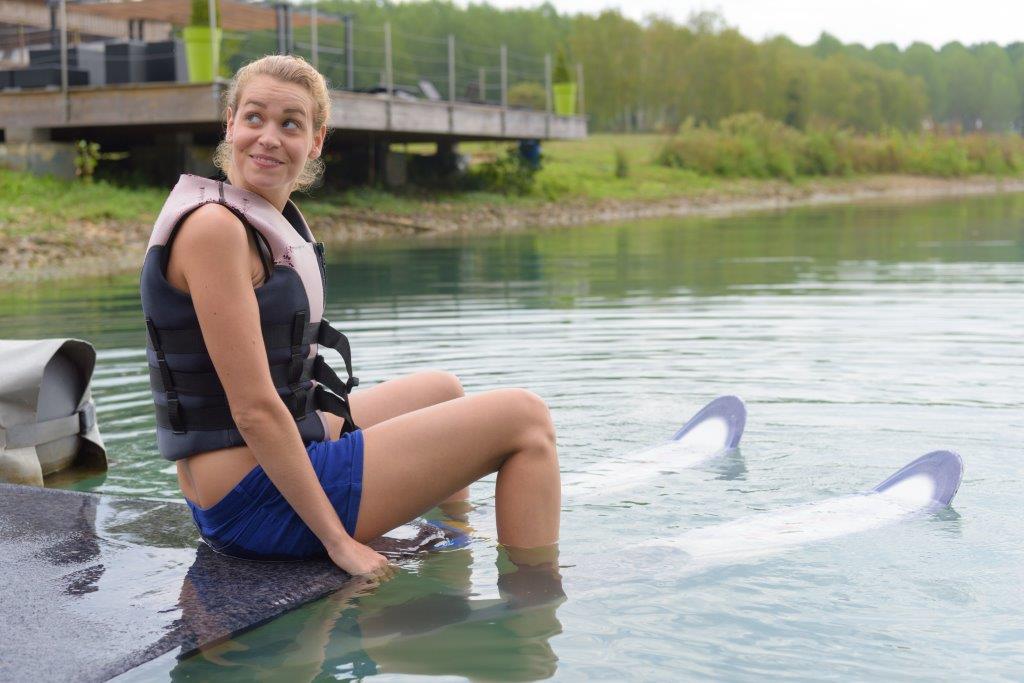
When you’re ready, signal to the driver that you’re ready to go, and critically, remember to keep your arms straight! Don’t try to pull yourself up. This is the crucial beginner’s error. You must get used to the feeling of the boat pulling the rope and the rope pulling you up. Repeat… let the boat and rope pull you up and trust that they will. Once you’re up, keep your knees bent and your eyes straightforward.
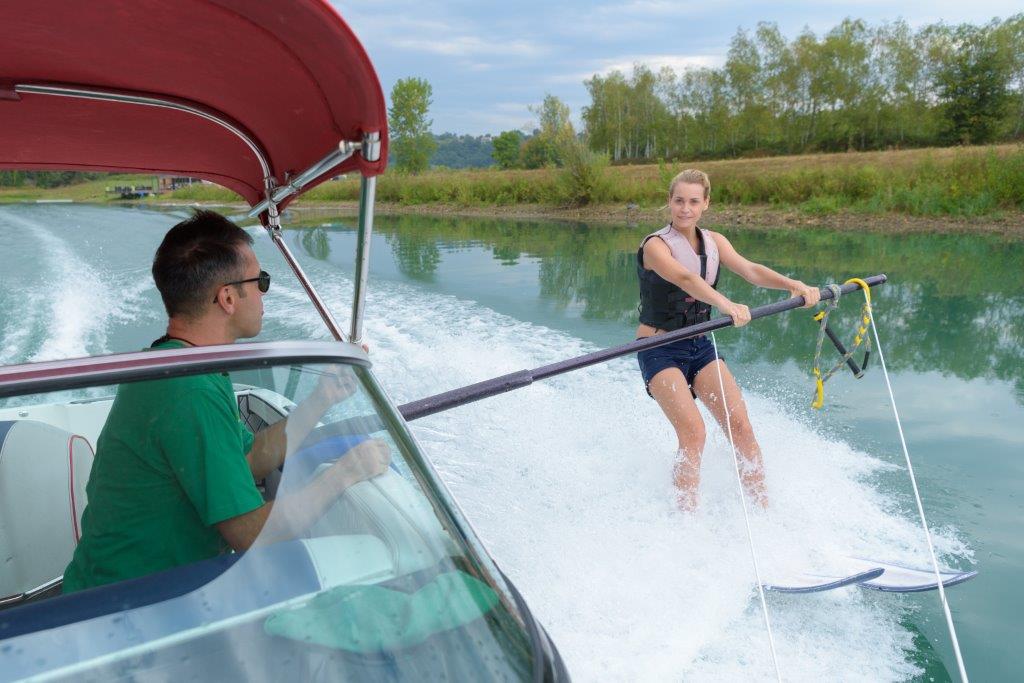
Staying up on your skis is relatively straightforward, at least as compared to the nuances inherent in the art of learning to get up on your water skis. The main aspects are keeping your knees bent at all times and remembering to lean back so as to maintain the appropriate position and balance. Keep those arms straight, never forgetting to let the boat do the pulling (it has more horsepower than you), and lastly, stay relaxed and have fun. If you hold on too tightly or try to control your experience too much, you’ll wear out really fast. Trust the people who are showing you how it’s done, stay positive and watch as you become a competent water skier in no time at all.
